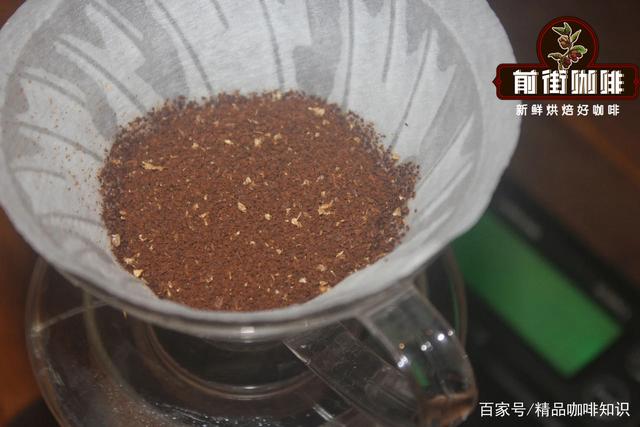The practice of boutique coffee, the origin story of hand-brewed coffee and the basic teaching of making it.
Hand brewed coffee is hand brewed coffee.
In the early 20th century, Ms. Merita, a German woman, was not satisfied with the taste of coffee brewed in a percolation pot and the coffee grounds in the cup, so she began to develop alternative brewing methods. She pokes a hole in the metal can with a nail and cooks the coffee with blotting paper. The finished coffee is less bitter than the coffee brewed in the percolation pot, and there is no coffee grounds to make trouble. Melita patented the filter, and Melita was founded.
On June 20, 1908, Melita registered her invention with the Royal Patent Office: a copper coffee filter cup with a water outlet at the bottom, the world's first follicular coffee cup.
This great invention soon became a household name and eventually became a must in German kitchens. In the mid-1920s, orders poured in and the business of making Merita coffee filter cups expanded sharply, but the original family company could no longer accommodate 100000 orders for filters, including ceramic filters, and the company moved to Mingdeng in 1929. Today, Melita is still run by the grandsons of the founder. Melita now has more than 3200 employees in 50 branches around the world. Melita's hand filter cup has long been improved in the direction of automation, and after countless improvements, Melita has finally achieved great success in the United States. that is, the most popular American coffee automatic filter machine we see now. But if you take apart an American coffee machine, the principle of the bubble invented by Mrs. Melita has barely changed, only to optimize the shape of the filter and filter paper.
Hand pots and other hand-made utensils became popular in the middle of the last century, but most of them went out of fashion, and only in recent years have they been revived by boutique coffee promoters. Coffee handcups and Italian coffee machines are the protagonists of the second wave of coffee, but in the third wave, people begin to pay attention to details and want to know more about the causes of brewing. Coffee lovers also want fresh coffee, not coffee that has been brewed and left on the thermostat for hours.
Baristas pour water into coffee powder by hand, which makes it easier to control the contact of coffee powder than an automatic coffee drip filter. Baristas control extraction to prevent coffee from being too bitter or too light. In addition, hand brewing can make coffee with a clean flavor, so it is respected, unlike coffee extracted by soaking (such as French filter pot), which has a strong flavor.

How to make a cup of hand-made coffee?
1. Preparatory work
Prepare coffee filter paper, filter cup, hand brewer, coffee powder and hot water at the right temperature.
two。 Wet filter paper
Rinse the hot water evenly on the filter paper, make it all wet, stick it tightly to the filter cup, and then pour out the hot water in the sharing pot.
3. Prepare coffee powder
Next, prepare the right amount of coffee powder. Pour the ground coffee powder into the filter cup and gently pat flat. Usually fine ground coffee powder looks a lot like the texture of granulated sugar. It is recommended that the gram weight of hand-brewed coffee recommended by SCA is 15g coffee powder 90 degrees hot water 225ml and the ratio of water to powder at 1:15.
4. Brewing and extraction
Pour hot water evenly on the coffee powder to make the coffee powder fully absorb water and expand. This process is called steaming using hot water with a powder content of 1: 2. The fresher the coffee powder, the bigger the expansion.
5. Complete the brewing
Slowly pour into the rest of the water, the current should be stable, you can draw a concentric circle along one direction to inject water, do not touch the filter paper wall. Stop after reaching the target amount of water, please enjoy it as soon as possible after the brewing is completed.
Important Notice :
前街咖啡 FrontStreet Coffee has moved to new addredd:
FrontStreet Coffee Address: 315,Donghua East Road,GuangZhou
Tel:020 38364473
- Prev

The development history of boutique coffee, the detailed origin story of the red cherry project and its significance.
Ethiopia is located in East Africa, and there are as many as 5, 000 varieties of Ethiopian native coffee beans found in the forests of the Kaffa region in the south of Ethiopia. Ethiopia is believed to be the birthplace of coffee. Local residents became excited, powerful and even crazy when they found that cattle and sheep had eaten a plant with a red fruit. The locals picked the fruit to try, and slowly found that they had changed.
- Next

What is the anaerobic treatment of coffee? what is the difference in the taste of coffee between anaerobic solarization and anaerobic washing coffee?
During this period of time, coffee processing doesn't seem to be anaerobic, so it can't be called innovation. In fact, anaerobic treatment is not sophisticated. Put the fresh coffee fruit in a stainless steel bucket with an one-way valve. As carbon dioxide is released, oxygen is constantly replaced, which is anaerobic; putting fresh fruit in a sealed bag and draining excess air is also anaerobic. So, it's not so hard to be anaerobic.
Related
- Beginners will see the "Coffee pull flower" guide!
- What is the difference between ice blog purified milk and ordinary milk coffee?
- Why is the Philippines the largest producer of crops in Liberia?
- For coffee extraction, should the fine powder be retained?
- How does extracted espresso fill pressed powder? How much strength does it take to press the powder?
- How to make jasmine cold extract coffee? Is the jasmine + latte good?
- Will this little toy really make the coffee taste better? How does Lily Drip affect coffee extraction?
- Will the action of slapping the filter cup also affect coffee extraction?
- What's the difference between powder-to-water ratio and powder-to-liquid ratio?
- What is the Ethiopian local species? What does it have to do with Heirloom native species?

